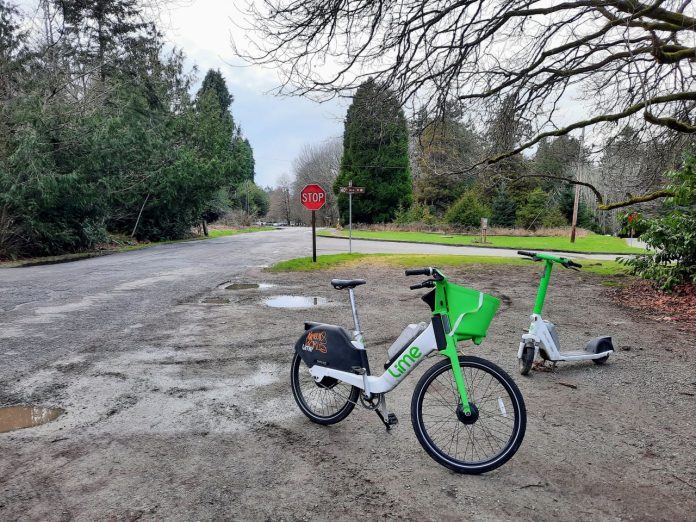
Seattle’s largest parks are largely off-limits to bikeshare and scootershare vehicles, but the Seattle Department of Transportation is reconsidering that policy.
After fits and starts, bikeshare and scootershare has turned into a staple mobility option in Seattle, but one place people cannot take one of the rented bikes is to — or through — a Seattle park. Most of Seattle’s major parks are off-limits, with the system cutting power to vehicles when entering the “no-go zones” that surround many Seattle Parks and Recreation (SPR) properties.
This can create headaches for riders who have to park at the far edge of the park to access them or are forced to use a more circuitous or dangerous route when a pleasant shortcut through a park may have been the desired path.
Overall, ridership doesn’t seem to have suffered much for this anomaly in the Seattle bikeshare and scootershare program. However, it is an untapped market and use case that could help grow the program’s success. And the park zones that have been walled-off from access were apparently created with very little public input or coordination, a significant difference with how the City of Seattle treats plans that impact car access.
While three different private companies operate Seattle’s shared micromobility program, the Seattle Department of Transportation (SDOT) sets the parameters. SDOT press secretary Ethan Bergerson indicated the agency bowed to the wishes of Seattle Parks and Recreation (SPR) on the service zones for shared bikes and scooters.
“SDOT and SPR worked together to determine these boundaries when the bike and scooter share program was created,” Bergerson said. “SPR requested that SDOT set up geographic boundaries around parks to be consistent with SPR policy that motorized vehicles are not allowed in most areas of parks, and that bikes must remain in specific areas such as roads or designated multi-use trails.”
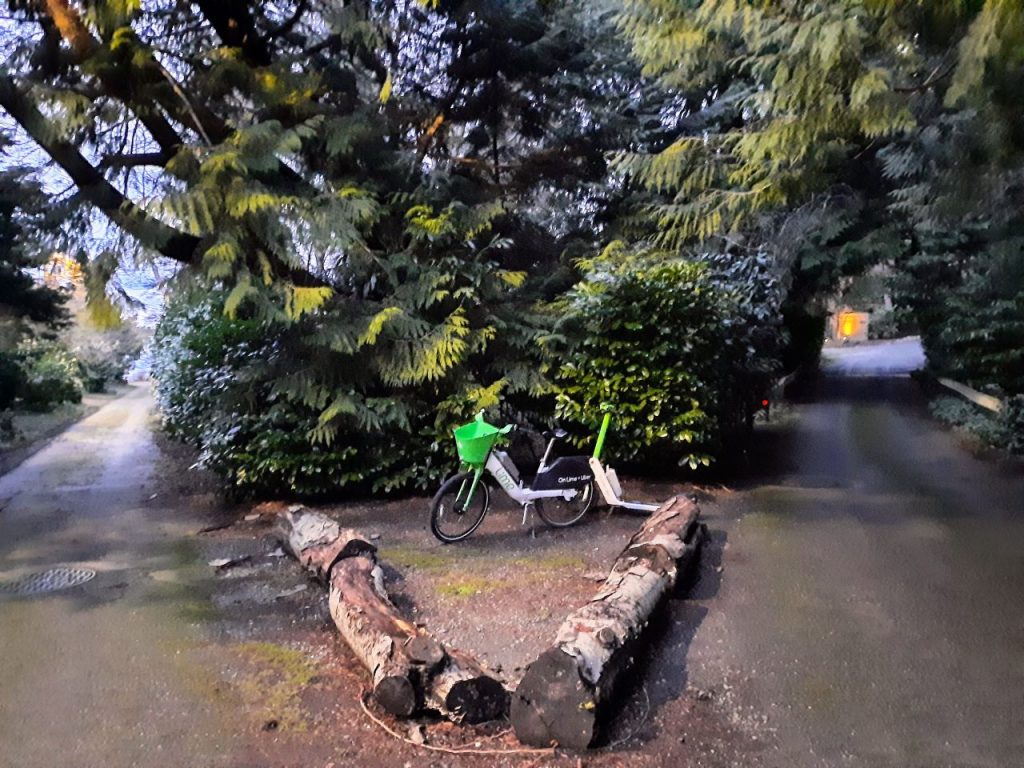
While keeping shared vehicles off areas where all bikes are supposed to be banned makes sense, the no-go zones are blunt. For example, none of Discovery Park’s 534 acres are in a Lime service zone at time of post, including roads with full car access and trails where regular bikes are permitted. Lime is Seattle’s top bikeshare and scootershare provider, accounting for more than 60% total trips in 2023, leading one competitor (Superpedestrian’s Link) to leave the market and another (Veo) to pause service this month while they retool with new vehicles.
Bird is the only other scootershare provider still presently operating in Seattle — and given the company’s bankruptcy proceedings it’s not clear how long that will remain the case. Bird has some no-go zones in parks, but not as extensive as Lime. Only the heart of the Discovery Park is off-limits according to their map, for example. However, the dearth of scooters active on the Magnolia peninsula suggest this part of town hasn’t been a hotspot for Bird generally. Likewise, the Washington Arboretum is more accessible on Bird scooters than Lime.
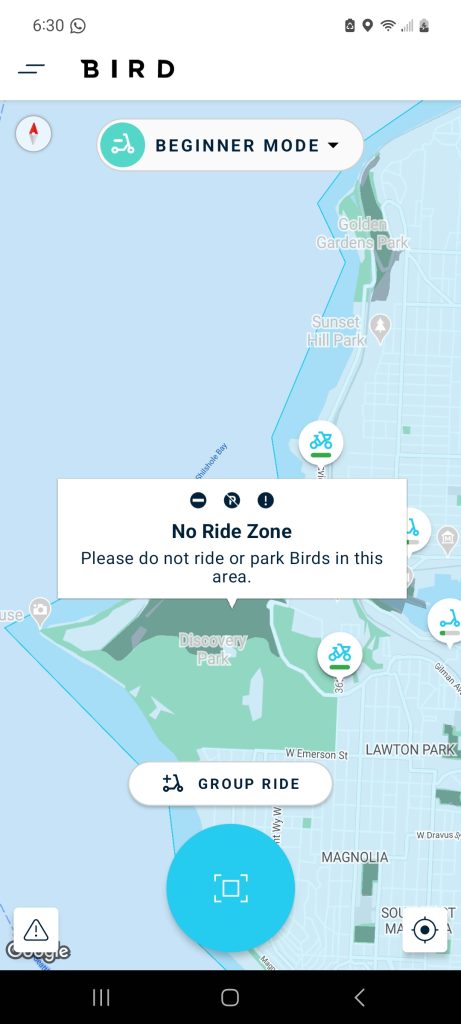
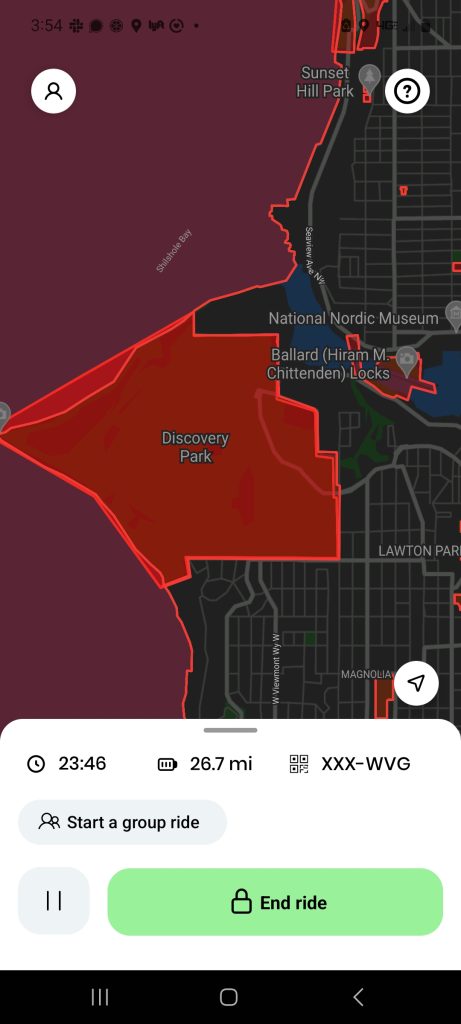
Seattle Parks staff did not respond separately respond to a request for comment for this article, but did collaborate with SDOT on their responses, Bergerson said.
While parks are a bit more accessible on Bird, the entire University of Washington campus is a no-go zone. In contrast, Lime vehicles are allowed on campus — a testament perhaps to a better working relationship with the university.
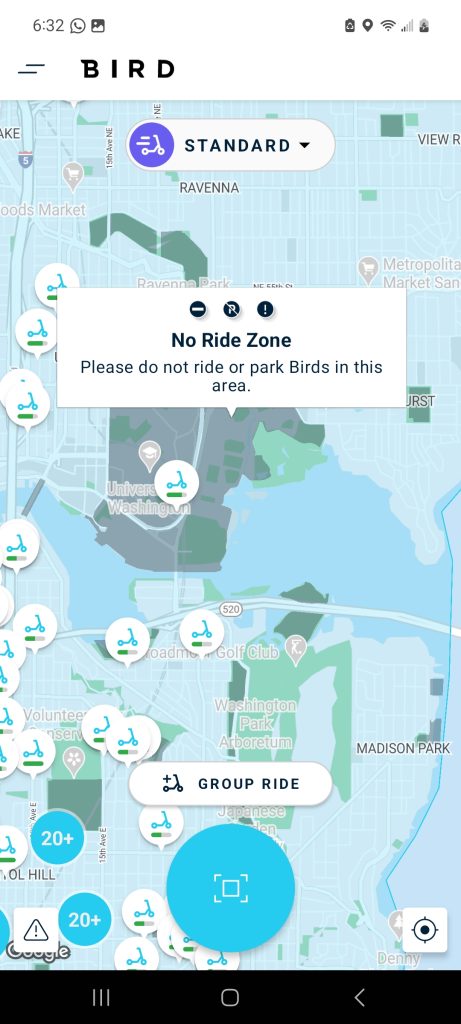
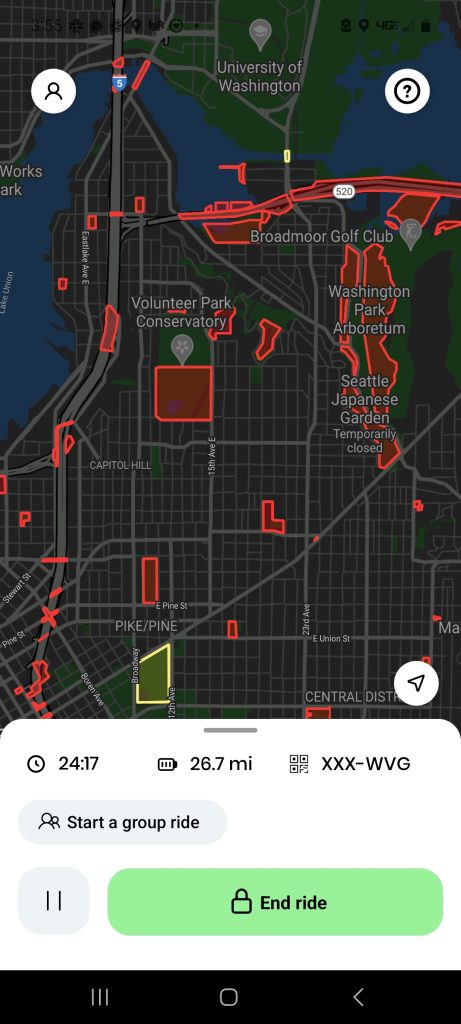
One service zone consideration at play is ensuring that the bikes and scooters will be reachable for maintenance staff from the respective companies, but that alone doesn’t explain the boundaries.
“Another factor in the decision was that bike and scooter share companies need to be able to easily retrieve their vehicles for charging or maintenance,” Bergerson said. “Allowing riders to end their trips on park trails where privately owned cars and trucks are not allowed would create challenges for the bike/scooter companies.”
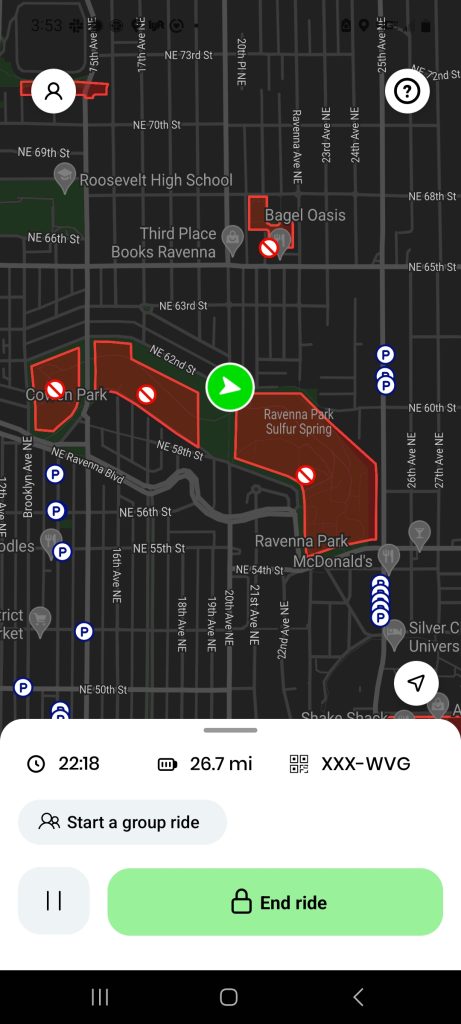
During the early days of the pandemic, SDOT rolled out its Healthy Streets program to increase safe recreation opportunities, which included roads and parking lots within parks, turning more areas into car-free zones that were more pleasant for people walking, jogging, rolling, and biking. However, within the last few years, car access has been restored to most of these places. Yet, bikeshare and scootershare access has not been added.
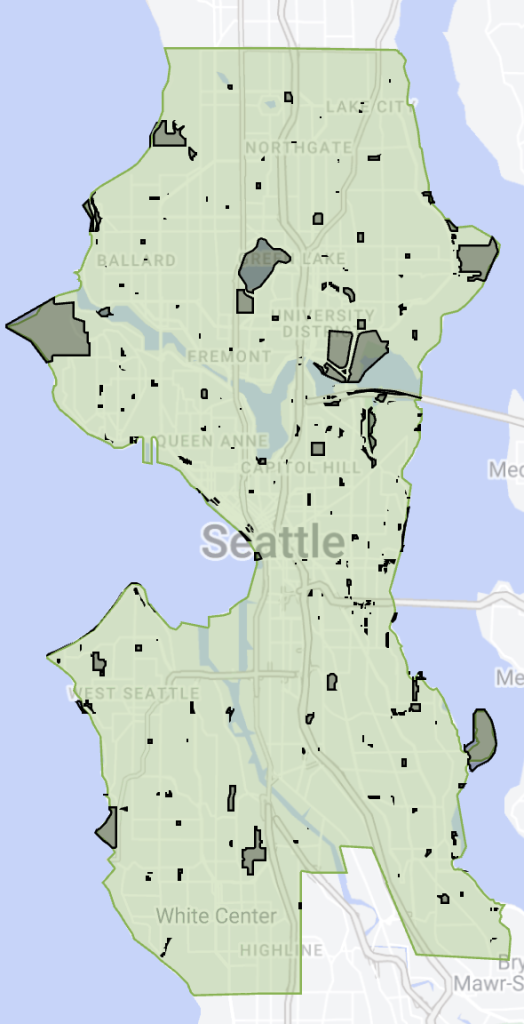
“In general, we agree that it is reasonable to allow shared bikes and scooters to travel on more paved public roads where cars and trucks are allowed if we can address challenges such as ensuring that bikes and scooters aren’t left in places where they will be difficult for other people to use and the companies don’t have access to easily retrieve them,” Bergerson said.
No timeline on a decision is set yet, though.
“We’ll work with SPR to look into these concerns further,” Bergerson said. “We’ll need to take a closer look at the geographic boundaries in the park system in order to determine which roads and trails are appropriate to reconsider and get a better sense of the timeline to make adjustments.”
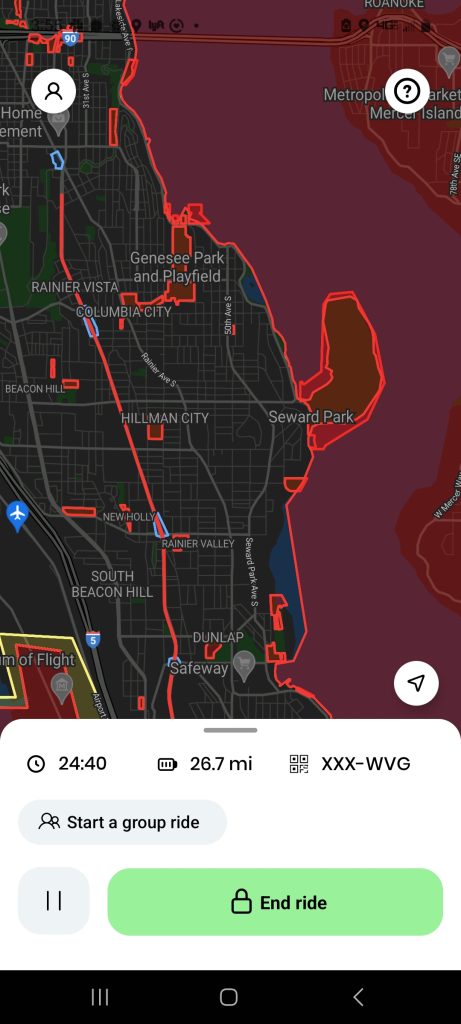
Seattle’s king of micromobility, Lime, said pushing the City to add parks to its service zones has not been a point of emphasis as of yet, but expressed some interest if the prohibition was lifted.
“Lime is committed to getting riders where they need to go and Seattle riders keep breaking ridership records,” Lime spokesperson Jacob Tugendrajch said. “We haven’t been pushing [for] parks being opened, but we are open to allowing our riders to enjoy Seattle’s beautiful parks and public spaces if allowed by our City partners.”
SDOT indicated a revision could be on the way.
“We intend to make it so that shared bikes and scooters can be ridden on public roads within parks where cars and privately owned electric bikes are allowed,” Bergerson said.
Bergerson encouraged users to highlight issues so that SDOT can help troubleshoot the boundaries or other issues with the service.
“We can’t fix a problem that we don’t know about, so if people encounter other roads where electric bikes and scooters are supposed to be allowed but the shared devices aren’t working, then we hope they will tell us so that we can look into it and troubleshoot the geographic boundaries,” Bergerson said. “In the past we have been responsive to the occasional feedback when the geographic boundaries weren’t working as intended, and have made adjustments to fix any unintentional issues.”
Program staff can be reached at ScooterShare@seattle.gov, BikeShare@seattle.gov, or by phone at (206) 684-ROAD.
Clarification: An earlier draft stated the Seattle Parks staff did not reply to a request for comment. This is misleading in the sense that they did collaborate with SDOT on their joint responses.
Doug Trumm is publisher of The Urbanist. An Urbanist writer since 2015, he dreams of pedestrian streets, bus lanes, and a mass-timber building spree to end our housing crisis. He graduated from the Evans School of Public Policy and Governance at the University of Washington in 2019. He lives in Seattle's Fremont neighborhood and loves to explore the city by foot and by bike.

